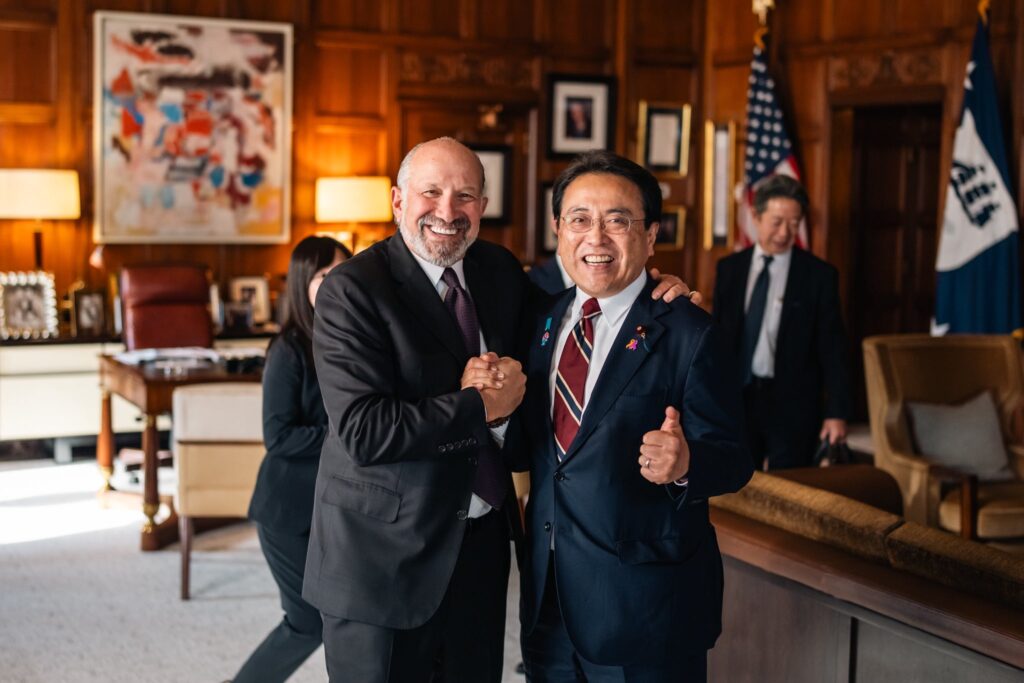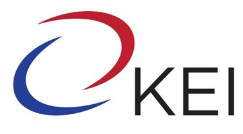The Peninsula
The U.S.–Japan Investment Deal and What It Means for South Korea
Published October 21, 2025
Author: Nils Wollesen Osterberg
Category: Economics, Indo-Pacific, United States, US-Korea alliance

The recently signed U.S.–Japan investment memorandum of understanding (MOU) establishes a new framework for how Washington structures trade and investment relations with its allies. Announced alongside the implementation of the U.S.–Japan trade deal, the MOU allocates USD 550 billion for Japanese investments in the United States and lays down procedures for how those funds will be approved and distributed. While the MOU underscores U.S. control over the selection and management of investments, it also places Japan in a position where rejecting investment proposals could result in higher tariffs.
South Korea’s own trade deal with the United States includes a USD 350 billion investment pledge and reciprocal 15 percent tariffs, but the structure of its investment fund remains unresolved. The terms of the U.S.–Japan MOU increase pressure on South Korea to accept similar arrangements, including U.S.-selected investments, limited discretion over project approval, and potential exposure to currency and capital risks.
The U.S.-Japan trade deal brings U.S. tariffs on Japanese automobiles to 15 percent, ensures no discrimination against Japan for semiconductors and other strategic products, and includes the USD 550 billion for Japanese investments in the United States. A separate MOU regarding the investment fund reiterated that investments will flow to strategic industries, including semiconductors, pharmaceuticals, metals, critical minerals, shipbuilding, energy, AI, and quantum computing. The MOU also establishes a timeline for allocating the investment funds and provides new details about Japan’s commitments.
Crucially, the MOU outlines the process for identifying and approving investments. An investment committee, chaired by the secretary of commerce, will recommend and oversee investments. The recommendations are then managed and executed by the U.S. Investment Accelerator, which was established through an executive order in March. The United States then presents the investment proposals to Japan, which, upon acceptance, must provide funding within forty-five days. Japan can reject investments, but this would result in forfeiting its distributions, and the United States could impose higher tariffs in response.
The MOU also defines the distribution of investment-free cash flows. The United States will distribute 50 percent of free cash flow from each investment, up to a “deemed allocation amount,” to each country through a special purpose vehicle. After that amount, 90 percent of free cash flows will be allocated to the United States and 10 percent to Japan.
Despite additional details provided through the MOU, some disagreements seem to persist. First, President Trump insists on having direct control over the selection of investments, while Japanese officials highlight the role of the investment committee and the requirement to consult a group of U.S. and Japanese representatives. Second, the United States refers to direct investments with cash infusions, while Japan envisions a combination of direct loans, loan guarantees, and credit-enhancement facilities. Initial talks surrounding the fund cited the Japanese expectation that the investment portion would be 1-2 percent, with the rest fulfilled by loans and loan guarantees. However, the fact sheet made no mention of the final parameters of the composition. Important, too, is that new Japanese Prime Minister Sanae Takaichi indicated that while she would honor the tariff agreement, she may try to negotiate the terms if Tokyo deems it harmful to national interests.
Still, the terms clearly establish significant U.S. control of the Japanese investment funds and their returns. While Japan has the ultimate authority to approve or reject investments, it cannot do so without potentially jeopardizing the tariff rates established through its trade deal with the United States.
Implications of the MOU for South Korea
On July 30, the United States and South Korea announced that a trade deal had been completed just ahead of the August 1 deadline by which the Trump administration threatened to levy 25 percent tariffs against most imports from South Korea. Instead, the deal set reciprocal tariffs against South Korea at 15 percent, as well as 15 percent tariffs on South Korean exports of automobiles and automobile parts to the United States. Announced ahead of pending Section 232 tariffs on semiconductors, the deal also promised that South Korean semiconductor and pharmaceutical exports would not face disadvantages. In return, South Korea agreed to remove all tariffs against the United States and improve market access for certain U.S. products, purchase liquified natural gas (LNG) worth USD 150 billion, and establish a fund of USD 350 billion for investments in the United States for strategic industries. While the U.S.-Korea trade deal appeared to establish an even playing field with Japan, it was not accompanied by a White House fact sheet, and the August summit between President Trump and President Lee provided little detail beyond reiterating an intent to honor the deal.
The U.S.-Japan MOU establishes a framework for investment agreements, and the United States has presented similar terms to South Korea to finalize their respective trade deal. For now, South Korea faces lower 15 percent reciprocal tariffs—down from 25 percent—but 25 percent tariffs remain in place against automobile exports to the United States. This puts South Korea at a relative disadvantage compared to Japan in its most important direct export to the United States until an agreement is reached on the investment component of the trade deal.
A major subject for continued negotiations has been the structure of the USD 350 billion investment fund. South Korea has envisioned that a relatively small portion of the fund would be allocated through cash distributions and, rather, largely used for a combination of loans and loan guarantees. Instead, the Trump administration claims that the funds will be allocated for direct investments selected by the United States and even by President Trump himself. The U.S.-Japan MOU increases the pressure on South Korea to accept similar terms, including the direct financing of investment projects and limited agency in selecting projects without risking higher tariffs.
The top-line investment fund amount of USD 350 billion has also emerged as a major challenge due to foreign exchange concerns. In an interview with Reuters during his September visit to New York for the UN General Assembly, President Lee said that “without a currency swap, if [South Korea] were to withdraw $350 billion in the manner that the U.S. is demanding and to invest this all in cash in the U.S., South Korea would face a situation as it had in the 1997 financial crisis.” Providing cash funding of USD 350 billion before the end of President Trump’s term in 2029 could increase the supply of the Korean won to foreign exchange markets and have significant depreciatory effects on the won’s exchange rate.
The Bank of Korea (BOK) maintains a multiple-basket-pegged exchange rate system that could face pressure, as the total investment amount represents 85 percent of its foreign exchange reserves, which is intended to maintain stability for the won. Drawing on the comparison to the U.S.-Japan agreement, markets for the Japanese yen are deeper than for the won. The yen holds reserve currency status, and the Bank of Japan has access to currency swaps with the U.S. Federal Reserve System, putting the yen at a lower risk. While there is not yet a currency swap agreement between the United States and South Korea that could help support the won, South Korean Minister of Trade, Industry and Economy Kim Jung-kwan has indicated that there is “a certain degree of consensus on the impact of this deal on our foreign exchange market.”
South Korea has also agreed to share data on currency market interventions with the United States on a monthly basis, while the United States has agreed not to list South Korea as a currency manipulator. Both agreements signal improved monetary cooperation during currency-swap agreement talks.
Conclusion
There are mixed implications for South Korea if it agrees to similar terms as the U.S.-Japan MOU. In 2024, South Korean exports to the United States totaled USD 128 billion—approximately one-third of the USD 350 billion investment pledges that would need to be distributed by early 2029 and return only 10 percent of free cash flows following the breakeven of the investments, based on Japanese terms. As such, the terms would imply that South Korea provides the United States with one dollar of near-free capital for every dollar of exports, in exchange for a reduction in tariffs from 25 percent to 15 percent on most goods.
The terms could expose moral hazard because the United States could pick potentially risky investments—and the financial risk would be carried by South Korea. Of course, the terms may allow South Korea to refuse funding particular investments, but doing so allows for the United States to increase tariff rates yet again. In this respect, South Korea’s pathway to a signed tariff deal with the United States has been complicated by the terms of the Japan deal, even while South Korean automobile companies face clear disadvantages, especially compared to the position of Japanese automobile manufacturers, in the absence of a deal. Finally, the exchange market risks associated with the sheer amount of investment flows could deal too great of a shock to the South Korean economy.
Nils Wollesen Osterberg is Economic Policy Associate at the Korea Economic Institute of America. The views expressed here are the author’s alone.
Feature image courtesy of U.S. Secretary of State Howard Lutnick.
KEI is registered under the FARA as an agent of the Korea Institute for International Economic Policy, a public corporation established by the government of the Republic of Korea. Additional information is available at the Department of Justice, Washington, D.C.
